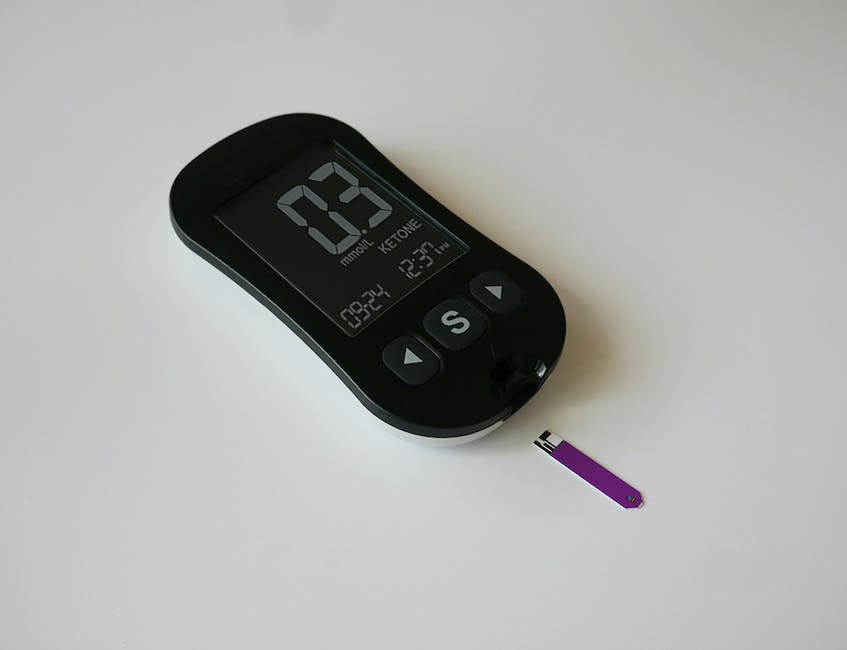Do you ever sit back and wonder about the fascinating things that our bodies do on a daily basis? The body’s unique biochemical activity can be mysterious—but the science behind it can be intriguing. Testing for ketones can give us a window into the inner workings of the body and help us keep track of our health. Take a deep dive into how test strips work and learn more about the science behind one important diagnostic tool.
1. Getting to Know Ketone Test Strips
Ketone test strips are an important tool for diabetics to be able to monitor their blood sugar levels regularly. Understanding the basics of how this product works and how to interpret the results from the strips will provide more accurate readings for tracking.
- Testing strips: Ketone test strips come in a variety of brands and can be purchased at most pharmacies. Generally, each type of strip works the same way requiring the user to place the strip in a urine stream and read the results once the strip changes color.
- Interpreting results: The results of the test strip should be interpreted immediately upon observing the color changes. The strip will take on different shades of purple, green, yellow and/or blue depending on the brand. Each color indicates different levels of ketones present in the blood, which should be noted for tracking purposes.
It’s important to follow the instructions of the type of ketone test strip being used. Each specific product will include the manufacturer’s instructions on reading the results as the colors may vary between brands. Additionally, for more accurate readings, the test strips should be used at regular intervals for tracking the sugar levels accurately.

2. How Do Ketone Test Strips Work?
Ketone test strips are a simple, cost-effective way of testing the level of ketones in the urine. Not only do these strips provide a simple, on-the-spot answer to the presence of ketones, but they are also often the only test needed to diagnose ketosis.
- The strips work by utilising a special chemical which reacts with certain ketones, causing the colour of the strip to change. This change can then be compared to a colour chart included with the strips which outlines the level of ketones present.
Test Sensitivity
Ketone test strips are fairly accurate in low-ketone readings, but are not as successful in higher ketone analysis. When a high level of ketones is detected in the urine, other tests are recommended to properly and accurately diagnose the presence of ketoacidosis.
The strips should also not be relied upon to measure the success of a ketogenic diet, as they do not indicate the level of ketone production in the body, only the level which is present in the urine.
3. Utilizing Test Strips Accurately
Accurately utilizing test strips is one of the most important steps for getting an accurate result for home health tests. There are a few important steps to keep in mind to ensure the best results:
- Read the instructions carefully
- Understand the expiration date of the test strips
- Know how to store the strips
Read the instructions – Before using the test strip kit, be sure to carefully read the package, including the instructions, warnings, and expiration date. This is to ensure that the results are accurate. Some tests require pre-test preparation, such as fasting, or activities such as refraining from exercise or certain medications before testing. Reading the instructions can provide warning of potentially hazardous affected.
Understand the expiry date – Even though a test strip may not be expired, it should be used in accordance with the expiration date listed on the packaging. It’s important to record the date of expiration as each test strip may show slightly different results based on the date they were manufactured. These results can also fade over time, so it’s important to use and store test strips in accordance with the listed expiration date.
4. The Benefits of Testing for Ketones
Testing for ketones offers numerous benefits, from providing insight into diabetes control to helping people manage low-carbohydrate diets. By monitoring ketone levels, many health issues can be prevented or diagnosed in an efficient manner.
- Diabetes Management: Testing for ketones can help individuals with diabetes better manage their blood glucose levels. When ketones are detected, people can take preventive measures to avoid potentially dangerous high-glucose levels.
- Low-Carb Diets: Testing for ketones is also beneficial for those wishing to follow a low-carbohydrate diet. Monitoring ketone levels helps individuals stay in ketosis, so their bodies can efficiently process fat for energy. Additionally, the results of the tests can be used to determine if more carbohydrates need to be added to a diet.
- Overall Health: Testing for ketones can also be an effective way of monitoring overall health. Ketone levels can change due to various factors, and they provide valuable information about how the body is functioning.
Testing for ketones is a simple way to maintain overall health and help individuals with diabetes better manage their condition. Additionally, the results of the tests can be used to make adjustments to low-carbohydrate diets for those trying to reach their wellness goals.
And that’s all there is to it! While the process of testing for ketones isn’t always easy, it’s certainly worth doing if you want to make sure your body is healthy and functioning correctly. With a few simple test strips, and the right understanding how they work, you’ll be able to keep a close eye on your body’s ketone levels.
